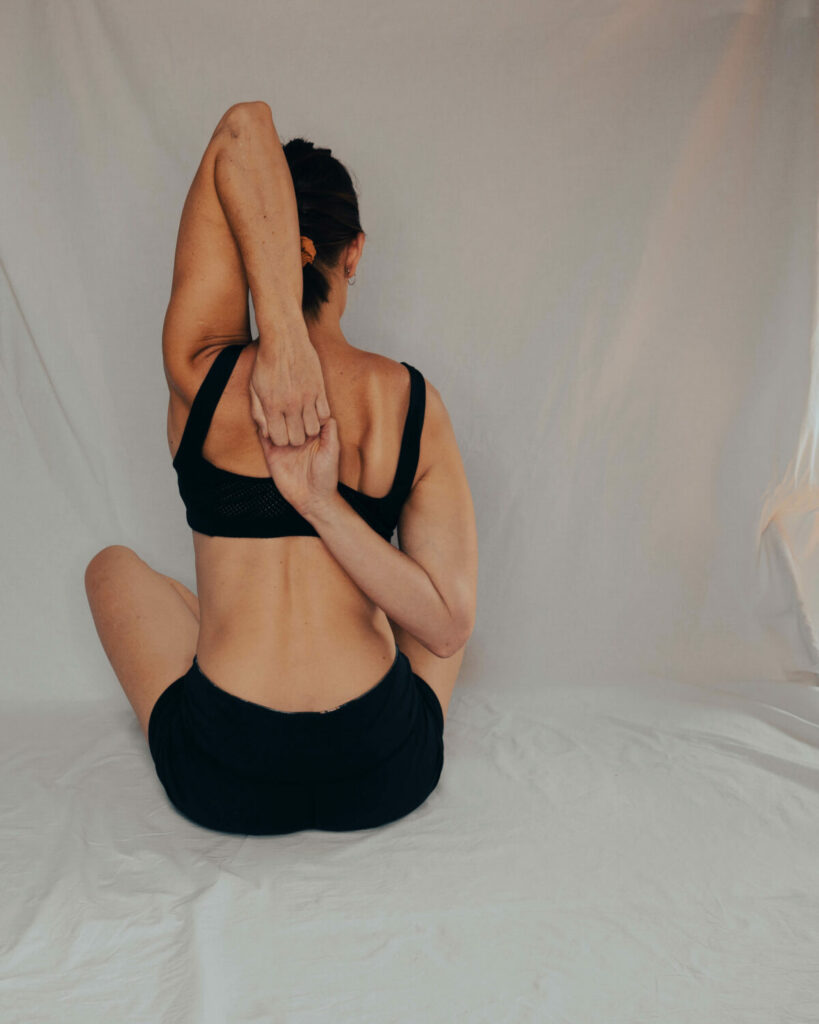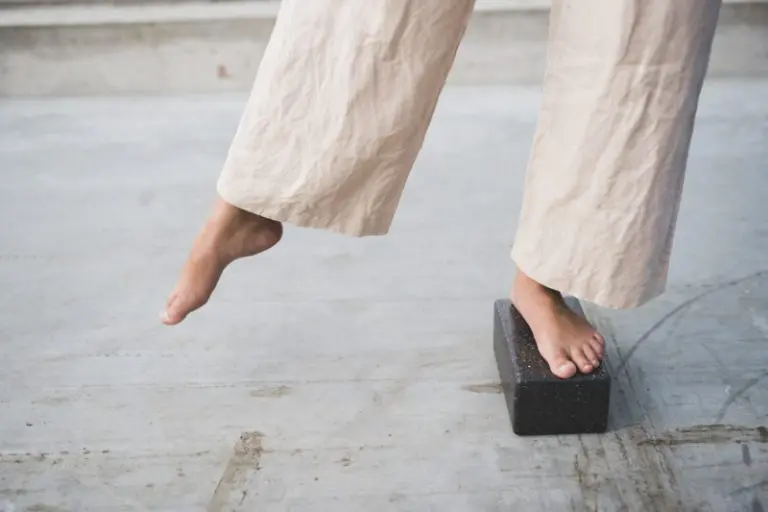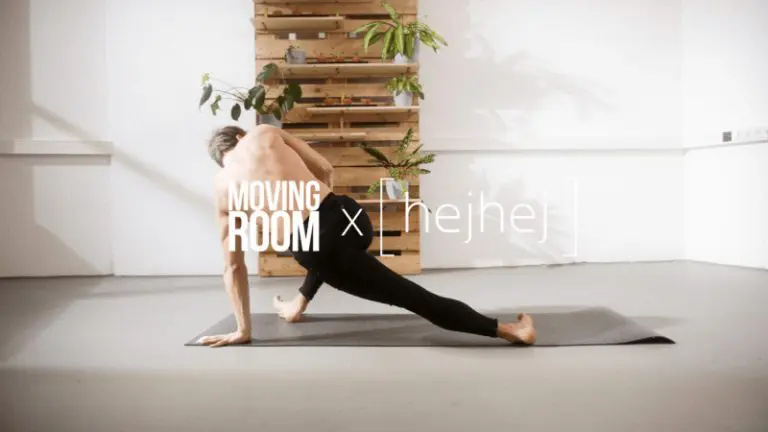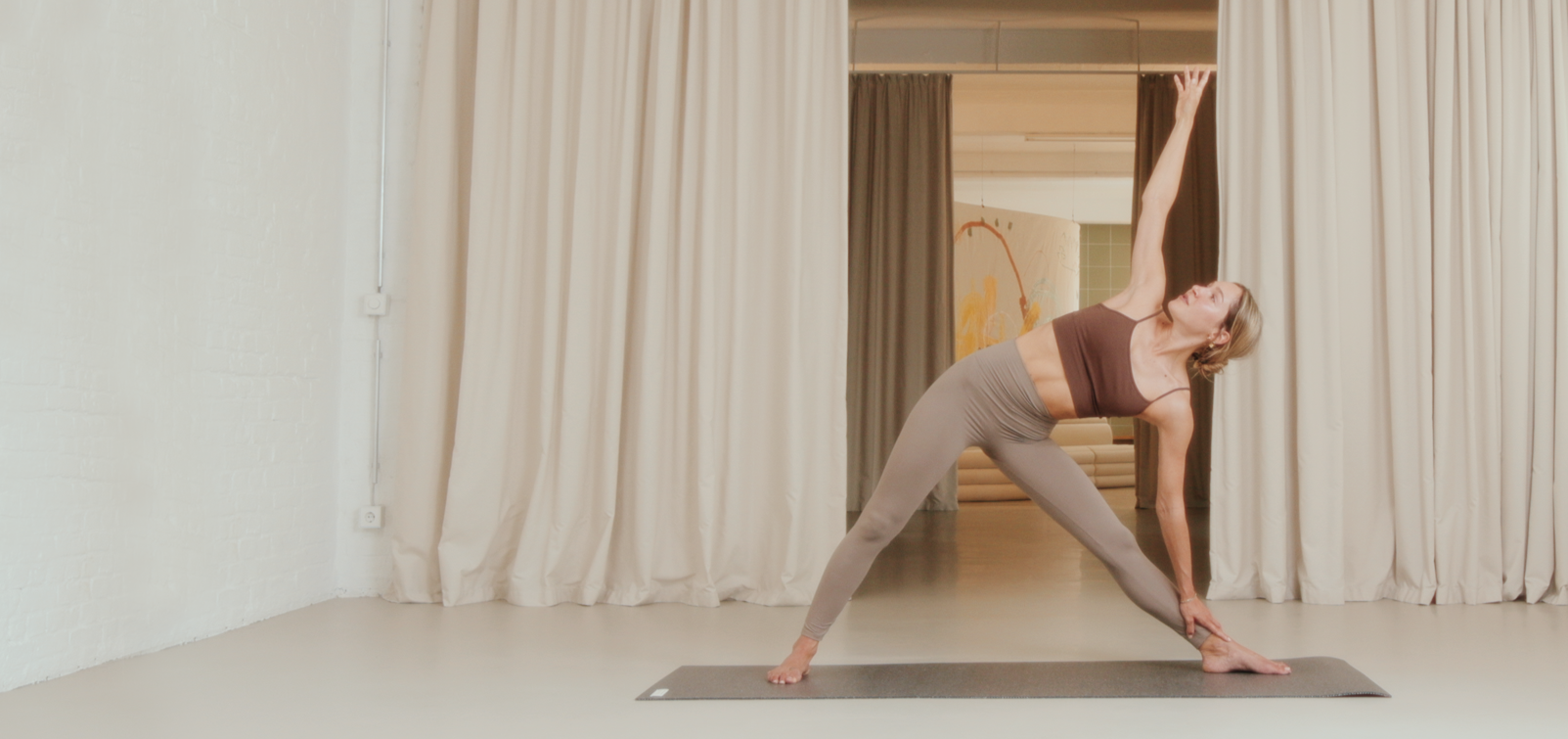In this wonderful guest article, Marta Witecka, yoga teacher, describes how you can finally do something good for your neck and shoulders. Be sure to read the article to the end, because there are some shoulder yoga asanas waiting for you that you can try out at home.
Marta has dedicated herself to yoga, strength training, meditation, and handstand work after studying law. Her aim with her programs is to make people feel good about themselves, helping them to become a better version of themselves. Thank you Marta for reminding us of the yin and yang in yoga.
Have you ever counted how many times per day you raise or tense your shoulders without even being aware of it? We do it unnaturally when we hold a phone between ear and the shoulder, lean on a desk when we are shocked by a loud noise and who knows how many more times per day.
It doesn’t take much to create shoulder tension when living an active and sporty life. That tension often leads to headaches, neck stiffness, or produces anxiety. It also kicks our nervous system out of balance. So how to help ourselves release that tension and bring balance and harmony back into our bodies? Learn more about shoulder yoga.
The roots
We can of course always jump straight into the bodywork and stretch the part of our body which seems to be under stress but it makes a lot of sense to dig deeper first. Try to find the source of the problem in order to find the “medicine” which will serve you best. As you know, body and mind are completely interconnected. All that happens in our minds affects our bodies and vice versa. When we are afraid of something the natural reaction of the body is muscle tension and acceleration of the heartbeat. When we are relaxed the muscles relax and the heart beats slow and steady.
So the first step in healing the body is to dig into the mind. Verify what in your mind might be causing the tension in the body and what movement habits might be affecting your state of mind. For example, if you are often scared, anxious, angry, or sad it is possible that you are unconsciously tensing your body when these emotions occur. If it’s difficult for you to identify or you don’t see a correlation between your emotions and the tension shift your attention to the body only.
Notice what you do with your shoulders all day long. Are you lifting them while writing fast on a keyboard? Are you reading books in a weird position which don’t allow your shoulders to rest? Maybe you wear a heavy bag just on one shoulder or you do handstands daily and don’t take time to relax afterward? Not only lifting the shoulders can be a manifestation of what is going on within you, but also what’s going on within you can be a manifestation of your relationship to your body. Take time to find the roots of your tension.
The daily habits
Everything in life has its place, including tension and the state of relaxation. Nothing is unwelcome but the great art is to become aware of all that is happening within us and the ability to bring it back to balance when it’s disturbed. Tension in the shoulders is not a bad thing if you’re holding a handstand or carrying something heavy but it’s not necessarily healthy to keep them tight while you’re sitting by your desk and working all day or simply preparing your breakfast. Become aware of what you do with your body daily and how you use it and it might be already very helpful to break the problematic habits.

The movement
If you are an active person you will most likely experience shoulder tension, no matter what is happening in your mind or your daily movement habits. It’s normal that muscles become tight if you train them to become stronger or more defined. Active Shoulder Yoga like the downward-facing dog, pushups, inversions, even warrior one or two will engage your shoulder area and put stress on that body part. Smart training is one thing, but there is no way to avoid tension if you’re tensing the muscles. So what do you do with tight shoulders? Let’s dig into that!
The practice – Shoulder Yoga
Sometimes it takes only a nice, long savasana to release the shoulder tension, but sometimes it takes a month of intense physiotherapy to release these knots in your trapezius muscles. No matter how tight your shoulders are though it makes a lot of sense to take good care of yourself. I’d been unconsciously building up my shoulder tension for years until I noticed. I realized I started to have headaches, an extremely tight jaw and that I lifted my shoulders while doing almost everything during the day. I began to have inflammation around my shoulder blades more and more often and sometimes couldn’t even move my neck! Also, I didn’t keep my anger under control and let it slip into disbalance very often. I realized that the tension in my body was impacting my emotional wellbeing and hence the quality of my life. A few visits to a physiotherapist helped but I realized I need to change my daily attitude to training and relaxation if I want to be able to live happily in my body.
I came up with a 50:50 rule: 50% of strength training. 50% restorative practices. On top of that a lot of continuous awareness about what I am doing with my body during the day. To make my practice easier to follow daily I’ve created a shoulder therapy routine which I try to do regularly, especially during periods of intense physical activities. Shoulder Yoga mainly consists for me of yin yoga poses but also a few yang exercises, to stretch the muscles. I like to focus on yin practice because it not only relaxes my body but also brings stillness into my mind and, as I said before, it’s all interconnected.
Shoulder Yoga Asanas
So here are a few shoulder yoga asanas that are a part of my routine. You don’t need anything to practice with me, but it might be helpful to have a yoga strap or blocks or even a bolster if you like to use these tools. It will be useful to have a timer. Set it to 1 or 3 minutes, depending on the pose. Thanks to the timer you will be able to simply focus on what you’re doing instead. After each pose, take a moment to just sit or lay in stillness to feel the effects of the pose.
1. Balasana with Shashankasana arms
Come into child’s pose. You can put your feet flat on the floor or tuck your toes under if it’s more comfortable this way. You have full freedom how you want to put your knees – together, hip-width or wider. Choose what’s good for you! Now, interlace your fingers behind your lower back, pull your shoulders down and hands down and back, inhale deeply, and on your exhale fold forward and lift your connected hands over the head. You might know this movement from your rabbit pose, Shashankasana. You can put the forehead on the floor or on the yoga block if you can’t reach the floor. Stay in the pose for around one minute.

2. Arrow
Stay in the same sitting position or modify it and this time interlace the hands in front of you. Round your whole back and tuck the pelvis under while straightening your arms and stretching them to the front. Bring your chin in, round your back, and hold the pose for around 30 seconds. Enjoy the stretch around the shoulder blades area and across your upper back!

3. Open wing
Lay on the belly in a T-shape, with your arms open to the sides. Now place your left palm close to your left ribs and roll to your right side. Find a position for your left leg that makes you feel comfortable – it can be straight or bent, with the knee reaching towards the sky. Rest your head on the floor or on a pillow for more comfort. In this pose, you should be feeling the stretch in front of your right shoulder. Positioning your right palm higher towards the top of your mat, or lower, towards your feet, will change the intensity of the stretch. In this pose try to relax completely the whole right shoulder and gradually also the rest of the body. Stay in the pose for 3 minutes and repeat on the other side. Have in mind that the other side might be more open or tenser and feel free to adjust your position on each side instead of trying to do exactly the same at all costs!

4. Half-closed wing
Stay on the belly. Put your right arm across the mat, so it’s facing its left side. You can use your toes to move the whole body a little bit forward, so the arm doesn’t press on your throat, but more on the chest. Keep your left arm extended over the head or relax it and put your head on the floor. In this pose, you should be feeling the stretch on the back of your right shoulder and around the right shoulder blade. Just as during the previous exercise, try to completely relax in the area that you’re stretching and gradually – everywhere else. Do your best to not tighten those areas which are affected most by the pose you’re in. Stay for 3 minutes and then do the same on the opposite side.

5. Garudhasana
I know this pose from my yang yoga practices but I love to do it in a yin way. Sit in a comfortable position and cross your arms in front of you, right arm over the left, until the elbows cross, or slightly more. Bend the elbows and try to connect your inner palms. If it’s not possible, simply keep your right arm straight and pull it towards your chest by pressing it with your left arm. Now, round your back and tuck your pelvis under. Let your arms drop slightly and relax. You should be feeling the stretch in your whole upper back and the back of the shoulders. Stay in the pose for around 3 minutes and then swap sides. The longer you stay in the pose the more time your body has to surrender and release all the accumulated tension.

6. Gomukhasana
Bring your right hand up and put the right palm between the shoulder blades. You might want to stay here for a while, stretching your tricep and getting used to the pose. Don’t focus too much on where your right elbow should be – it can be close to your head or further away from it. Find where you feel the most of the triceps stretch and no pain in the shoulder joint. When you’re ready, bring your left arm behind you and try to connect both palms. You should feel some stretch in the front of your left shoulder but it depends a lot on your body. If you can’t connect your hands use the strap. Now, the most difficult job – relax your shoulders. Stay in the pose for 3 minutes and then take 1 minute of rest. Enjoy the feeling after this intense pose. Do the same on the other side.

7. Neck stretches
Sit in a comfortable position and let your head bow to allow the back of your neck to stretch gently. You don’t need to press it with your hands, just let the weight of your head do the job. Stay in the pose from 1 to 3 minutes and then move your head to the left, to stretch the right side of it. Stay here for the same amount of time and move the head to the right. After this sequence, you can also add some head positions where you feel most of the stretch and stay there for a minute or so.

After you finish the shoulder yoga practice, lay down in savasana for 5 minutes. Set the timer so you can relax and enjoy the flow of qi energy all around your upper body. I love to do this practice not only after an intense workout day but also before I go to sleep or when I feel my immune system getting weaker.
Namaste!
Thank you Marta for this informative article! We are excited to try your shoulder yoga asanas ourselves after a long day at the laptop.
You can find Marta Witecka at:
www.handstandworks.com and www.martawitecka.com
Or on Instagram via:
@handstandworks and @martamwitecka




